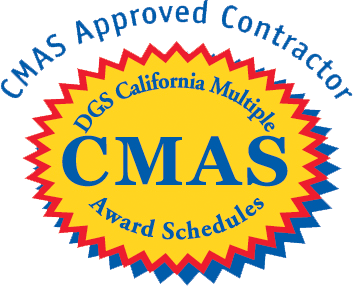The AV integrator Pomona higher education institutions can consult with Vizual Symphony for free. We are a woman-owned certified small business in Glendale, California, with over 20 years of higher education tech experience. As an AV Integrator Pomona near me, we are local, and with audio-visual technology, we can make a huge difference. This article discusses how AV technology and its integration change how students interact with classmates, educators, and schools.
Integrating audiovisual (AV) technology in higher education revolutionizes how educators teach and students learn. Here, we will delve into the various aspects of AV technology, its benefits, and how it transforms the educational landscape. AV technology is at the forefront of modern education, from engaging lectures to collaborative learning spaces and remote learning solutions.
Engaging Lectures Include Amazing Visual Technology
Educators increasingly use AV technology to create more engaging and effective lectures. For instance, they now use digital whiteboards and interactive displays instead of traditional chalkboards and whiteboards. Using these tools can make lesson visuals more engaging. By incorporating high-quality projectors and large screens, instructors can present complex concepts, helping students grasp difficult topics more quickly.
Visual aids such as videos, animations, and graphics can break intricate ideas into manageable segments. These tools not only enhance understanding but also keep students engaged. Unsurprisingly, visual learning aids can improve retention rates and stimulate interest in the subject. For instance, a biology lecture that includes 3D models of cellular structures via a VR headset enthralls students. Learning outcomes improve with memorable immersive experiences that support better retention of data.
Moreover, lecture capture systems are becoming commonplace in higher education. Our AV integration services include designing and installing lecture capture systems. These systems record and stream lectures, allowing students to review material at their own pace. This technology is particularly beneficial for students who may have missed a class or need to revisit a lecture to reinforce their understanding.
Integrate Audio-Visual in Collaborative Learning Spaces
Collaborative learning is another area where AV technology shines. Modern classrooms are designed to facilitate group work and interaction, and AV systems play a crucial role in this setup. Interactive screens and wireless presentation systems enable students to share their work effortlessly. These tools encourage collaboration and make it easy for students to present their ideas to the class.
Group projects can benefit from AV technology by allowing real-time information sharing. For example, students working on a joint presentation can use cloud-based collaboration platforms integrated with AV systems to work together seamlessly, even in different locations. This level of interactivity and connectivity fosters a more inclusive and collaborative learning environment where all students, regardless of physical location, can participate equally.
Furthermore, huddle spaces equipped with AV technology provide ideal settings for small group discussions and brainstorming sessions. These spaces are typically outfitted with interactive displays, video conferencing equipment, and wireless connectivity, making it easy for students to collaborate and communicate effectively.
AV Integration in Pomona for Remote Learning Solutions
 The pandemic has acted as a catalyst for adopting remote learning solutions in higher education. As institutions shifted to online learning, the importance of reliable AV systems became evident. However, it’s important to note that there may be challenges in ensuring all students have access to the necessary technology and internet connectivity. High-definition cameras, advanced microphones, and robust video conferencing platforms ensure clear communication between instructors and students.
The pandemic has acted as a catalyst for adopting remote learning solutions in higher education. As institutions shifted to online learning, the importance of reliable AV systems became evident. However, it’s important to note that there may be challenges in ensuring all students have access to the necessary technology and internet connectivity. High-definition cameras, advanced microphones, and robust video conferencing platforms ensure clear communication between instructors and students.
Hybrid learning models combine in-person and online instruction and rely heavily on AV technology. Classrooms with high-quality cameras and microphones can stream live lectures to remote students, creating an inclusive learning environment. Additionally, virtual classrooms with interactive features promote classroom equity. Students can easily participate in discussions and activities, in-person or remotely.
AV technology also supports asynchronous learning, where students can conveniently access recorded lectures and course materials. This flexibility is especially advantageous for non-traditional students with work or family commitments. Access to high-quality educational AV content and services from a diverse student population. In addition, resources like lecture capture systems help colleges and universities push for better learning outcomes and higher enrollment.
Improving Accessibility with Audio Video Technology
Accessibility is a critical consideration in higher education, and audiovisual technology plays a significant role in making learning more inclusive. For instance, closed captioning and transcription services for recorded lectures ensure that students with hearing impairments can access the material. Similarly, screen readers and other assistive technologies help students with visual impairments engage with digital content. These are just a few examples of how AV technology can accommodate students with different learning needs.
Interactive whiteboards and touchscreens can also support students with physical disabilities. These tools often come with customizable settings that allow students to adjust the interface to their needs. For example, raising touchscreen sensitivity allows operation with a light touch, making it easier for students with limited motor skills to use.
Moreover, AV technology champions inclusivity supports language learning and caters to non-native speakers. Real-time translation services and multilingual subtitles can make lectures more accessible to international students, ensuring they feel included in the learning process. This technology fosters a sense of belonging in learning, where all students have the opportunity to succeed.
Enhancing AV Integrations and Student Engagement with Gamification
Gamification in education involves integrating game design elements such as point scoring, competition with others, and rules of play into the learning process. This approach has been shown to increase student engagement and motivation.AV technology is crucial in gamifying education by providing the tools to create interactive and engaging learning experiences. For instance, digital quizzes and interactive simulations can turn traditional lectures into fun and competitive activities.
Virtual and augmented reality (VR and AR) are also powerful tools for gamification. In addition to creating immersive learning experiences that capture students’ attention and make learning more memorable. For example, a history class can use VR to transport students to ancient civilizations, allowing them to explore historical sites virtually.
Gamification makes learning more engaging and helps improve retention and motivation. Educators can encourage student participation and healthy class competition with game mechanics such as points, badges, and leaderboards.
Future Trends in AV Technology for Higher Education
The future of AV technology in higher education is promising and brimming with potential. Continuous innovations are enhancing learning and operational efficiency. Artificial intelligence (AI) is set to play a significant role in personalizing education, opening up new horizons for tailored learning experiences. AI-driven analytics can tailor content to individual learning styles, ensuring students receive the most effective education possible.
Advancements in touchscreen technology are making interactive displays more intuitive and versatile. These screens will soon become a classroom standard, supporting a more engaging and collaborative learning experience. Furthermore, there is an increasing focus on sustainable audiovisual (AV) technology. Energy-efficient systems and eco-friendly materials are becoming priorities for educational institutions aiming to reduce their carbon footprint.
Local Pomona AV Integrator Wants to Meet with You
AV technology in higher education enhances the learning experience, making it more interactive and accessible. However, its successful implementation relies heavily on the active involvement of educators and administrators. AV technology transforms the educational landscape from engaging lectures to collaborative learning spaces and remote learning solutions. The demand to integrate these technologies means that higher education and AV integrators in Pomona will be long-term collaborators. Working together, they can bring technology to students that meets their dynamic and diverse needs.
By proactively identifying and incorporating emerging technology trends and fully integrating cutting-edge audiovisual (AV) solutions into their educational infrastructure, academic institutions can enhance the delivery of education and cultivate dynamic and inspiring learning spaces. In addition to enhancing the learning experience, AV technology can also improve operational efficiency. For instance, automated lecture capture systems can reduce the time and effort required for manual recording and distribution of lectures. The future of higher education is bright, and AV technology is at the forefront of this transformation.
It takes experts to get all you can out of the technology available for a couple of reasons. First, tech innovations are happening faster than ever, so staying current on the latest is impossible unless you are in the audiovisual field. On top of that, technology today may have a simple, easy-to-use interface, but that does not mean it is not complex. Quite the contrary. Many of the AV integrations we create, design, install, maintain, and update for our clients require an entire team of AV integration specialists to complete.
Let Vizual Symphony be your higher education AV integrator in Pomona. With the right AV integration company, technology can provide a more interactive and immersive learning experience. Vizual Symphony loves to make dreams come true, and we have the experience, knowledge, and determination to do it. Our consultations are always free. Contact us online or by phone at 626-229-9112.




